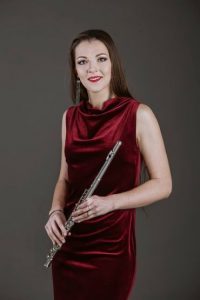The Flute Vibrato in the 18th to the 21st Century: Contexts and Interpretations
Doctoral student: Eglė Juciūtė
Supervisor: Assoc. Prof. Ilze Urbane, Assoc. Prof. Dr. Laima Budzinauskienė
Department: Winds and Percussion
Duration: 2013–2017
Abstract
A planned and thought-through vibrato is something which is often missing in today’s performances of flutists. Their vibrato is often misplaced and fails to meet the style requirements and certain aura of the composition. The flute is a unique instrument as the performers have no mouthpiece to control the air flow and must shape the width and direction of the air flow themselves. Vibrato is an element of music language achieved by pulsating air and used to add expression and intensify the crescendo, give meaning, expression and intensity to a prolonged note. In performances and in music pedagogy, the search for the sound quality and for musicality is frequently non-equivalent: learners simply cannot express their images by means of music due to a lack of techniques, the sound spectrum, and the narrowness of possibilities. By relating all that to the search for a meaningful vibrato, we can argue that different artificial sound “shaking” more frequently causes damage than helps the performer: it is very important to maintain the concept of the high-quality, smooth, and healthy sound and not to mask its weakness or instability by vibrato. Vibrato can also be produced by lips or cheeks, however, those methods are not desirable. Regular deep breathing while feeling the diaphragm muscles and the speed, width, and direction of an air flow are of special importance for the vibrato production, because all that predetermines the strength and the timbre of the sound. Vibrato is a unique element of the music language, an integral part of the flute sound. Outstanding flutists most frequently refuse from vibrato only in cases of a conscious musical solution. A suggestive and effective use of vibrato ought to be a synonym for a moderate vibrato.


